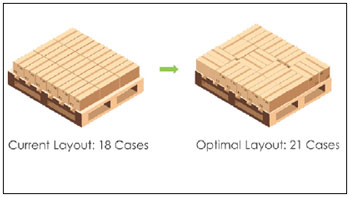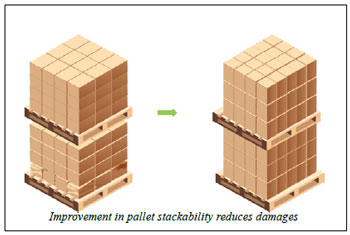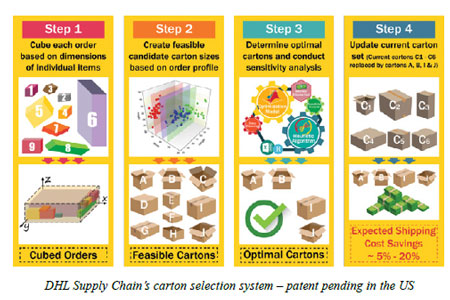Challenges
• Pallet packaging decisions are often an overlooked area of a warehouse operation. However, the pallet remains the primary storage medium in warehouse operations and decisions on how to orient case patterns on a pallet can lead to significant storage utilization increases.

• Carton utilization in a warehouse and addresses the problem of packaging orders into cartons that are too large for their contents, this leads to additional dimensional weight charges from the parcel carriers. Since shipping is often 2X fulfillment costs, this can be very significant.
Potential Solutions
• Pattern Optimization: Pallet case patterns usually follow simple configurations. In one example, each layer of a pallet has 6 cases along the one side of the pallet repeating 3 times. This particular configuration would yield 18 cases per layer, but leaves unused space on the pallet footprint. A more complex pattern increases the cases per layer to 21 cases with no cases overhanging from the pallet. Note, case overhang may be acceptable in certain situations and thus utilization could increase further. Across 4 layers on a pallet this is a 12 (3 cases per layer X 4 layers) case difference and increases storage utilization by 15%.











